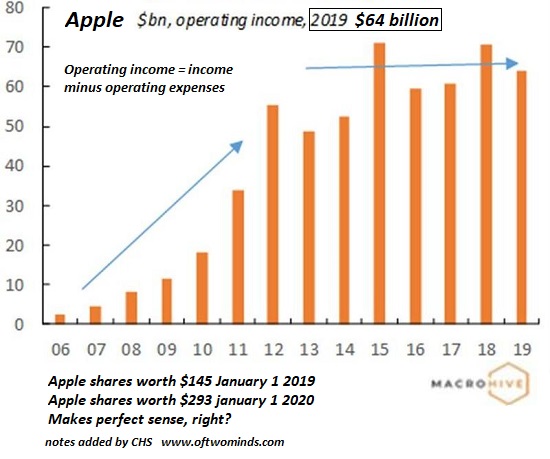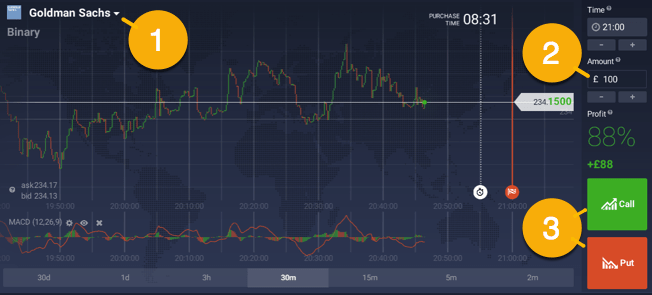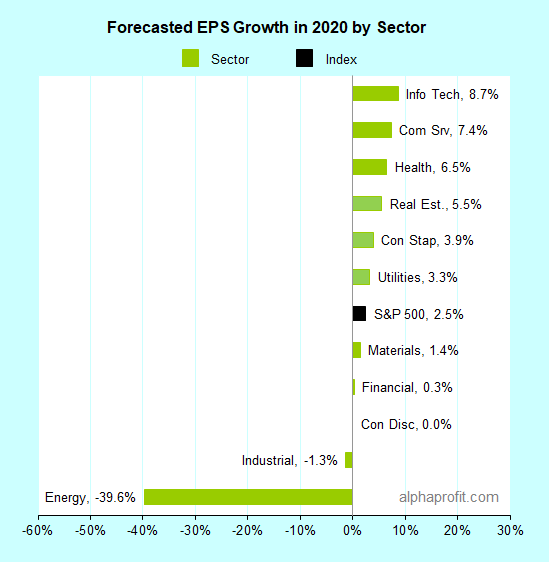Contents:
Because STEM skill sets are critical to the country’s sustainable development, work is needed to boost the recruitment and retention of residents, especially Qatari nationals, in STEM domains. While progress has been accomplished in terms of flourishing student enrollments, improved literacy rates, and women’s access to education, these successes have not yet translated into a real, full-fledged transition to a knowledge economy. Public K–12 schools are attended mostly by nationals, as are the country’s only two national universities, Qatar University and the University of Doha for Science and Technology established in 2022. Salient criticisms that have been reverberating in public and official discourse circles refer to the poor manner K–12 schools are managed and the jejune level of school graduates who find themselves unprepared for post-secondary education .
- Econometrics is the use of statistical and mathematical models to develop theories or test existing hypotheses in economics and to forecast future trends from historical data.
- Preparatory school students in 7th (30.2%), 8th (33.6%), and 9th (36.3%) grades took part in the survey.
- The National Institutes of Health explains the relationship between litigation pressure and rates of C-sections and VBACs.
- An area that has garnered growing attention in the sphere of STEM education and is consistently echoed in public and private discourse is connected with students’ attitudes towards and interest in STEM disciplines and potential professions .
Mathematics is the only realistic technique to approach and resolve economic problems since they frequently include so many variables. Alfred Marshall claimed that every economic issue that can be measured, expressed analytically, and resolved should be handled through mathematical work. Formal economic modeling began in the 19th century with the use of differential calculus to represent and explain economic behavior, such as utility maximization, an early economic application of mathematical optimization. Mathematical economics is the application of mathematical methods to represent theories and analyze problems in economics. Often, these applied methods are beyond simple geometry, and may include differential and integral calculus, difference and differential equations, matrix algebra, mathematical programming, or other computational methods.
Mathematical economics as a form of pure mathematics
An important contribution that this study has for policymaking and scholarly knowledge lies in its emphasis on the importance of fostering young Qataris’ interest in STEM and the value of STEM teaching and learning for sustainable development in Qatar. A starting point in this direction would be to ensure students are interested and engaged in studying STEM. The types of math used in economics are primarily algebra, calculus and statistics. Calculus is used to find the derivatives of utility curves, profit maximization curves and growth models.
Don’t say ‚prove‘: How to report on the conclusiveness of research … – Journalist’s Resource
Don’t say ‚prove‘: How to report on the conclusiveness of research ….
Posted: Mon, 13 Feb 2023 08:00:00 GMT [source]
As we had three domains in the survey (interest in mathematics , interest in science , and interest in technology ), we tested the average responses of each respondent for all items, and we considered these domains as dependent variables. The father’s/mother’s level of education and status of employment were examined as household predictors of student attitudes and interests. The State of Qatar is a small rentier country that enjoys abundant wealth from gas and oil resources. Seeking to develop a competitive and diversified economy has been a top priority on the policy agendas of the country’s leadership for the past few decades . An essential component of Qatar’s development plans outlined in the National Vision 2030 is the economic pillar, underscoring the urgency of diversifying and securing a sustainable economy . The achievement of this goal hinges on the country’s strategic decision to transform its economy from a heavy reliance on natural resources to a knowledge-based economy optimizing its intellectual assets.
Mathematical Economics vs. Econometrics
Alfred Marshall argued that every economic problem which can be quantified, analytically expressed and solved, should be treated by means of mathematical work. One of the limitations of this study concerns its examination of science, technology, , and mathematics combined instead of exploring each independently. Treating the four disciplines together as an integrated whole denies the variation that exists across different STEM domains and the wide differences. Demonstrably, STEM fields are different, with each having its distinct body of knowledge and its proper reservoir of functions and skills. Exploring the perspectives of parents and teachers will further enrich the analysis of additional data that examines intrinsic and extrinsic conditions affecting student choice to pursue or refrain from STEM. Future research is required to study in-depth, individual STEM disciplines and investigate, independently, STEM educational versus occupational student interests.
Econometrics analyzes data using statistical methods in order to test or develop economic theory. Over the course of the 20th century, articles in „core journals“ in economics have been almost exclusively written by economists in academia. Edgeworth devoted considerable effort to insisting that mathematical proofs were appropriate for all schools of thought in economics. While at the helm of The Economic Journal, he published several articles criticizing the mathematical rigor of rival researchers, including Edwin Robert Anderson Seligman, a noted skeptic of mathematical economics.
Economics includes numerous specialties at the graduate level, such as econometrics, international economics, and labor economics. Another study conducted by Sadler and others revealed that males tend to be drawn to fields such as engineering, while females are more inclined towards fields that involve the qualities of caring for others, including health, medicine, and nursing. Gender gaps in student STEM choices have also been ascribed to socio-cultural stereotypes, suggesting that males generally opt for science-oriented subjects while females are more likely to choose non-science subjects .
A computational framework for physics-informed symbolic … – Nature.com
A computational framework for physics-informed symbolic ….
Posted: Mon, 23 Jan 2023 08:00:00 GMT [source]
Full BioRobert Kelly is managing director of XTS Energy LLC, and has more than three decades of experience as a business executive. He is a professor of economics and has raised more than $4.5 billion in investment capital. Scott E. Page , „agent-based models“, The New Palgrave Dictionary of Economics, 2nd Edition. „nonlinear programming“, The New Palgrave Dictionary of Economics, 2nd Edition. „linear programming“, The New Palgrave Dictionary of Economics, 2nd Edition.
Mathematical optimization
While his first models of production were static, in 1925 he published a dynamic „moving equilibrium“ model designed to explain business cycles—this periodic variation from over-correction in supply and demand curves is now known as the cobweb model. A more formal derivation of this model was made later by Nicholas Kaldor, who is largely credited for its exposition. The method is said to benefit from continuing improvements in modeling techniques of computer science and increased computer capabilities. Issues include those common to experimental economics in general and by comparison and to development of a common framework for empirical validation and resolving open questions in agent-based modeling. Johnson, Mohr-Schroeder, and Moore note that the bulk of literature that has investigated topics related to STEM education has increased significantly, thus calling for future research studies.
- That’s why most attorneys, politicians, and wall street executives have in depth data in this field.
- Analysis is the fourth and final stage of educational efficiency with respect to the examine of economics.
- In some curricula, mathematics is offered independently to support the examine of different college subjects as an ‘instrumental subject’, and in different curricula, integrated courses which combine mathematics and different fields are supplied.
- Scott E. Page , „agent-based models“, The New Palgrave Dictionary of Economics, 2nd Edition.
- Economic policy decisions are rarely made without mathematical modeling to assess their impact and new economics papers are rarely published without some mathematics in them.
The authors refer to „verbal techniques“ as those which conveyed the subject of the piece without notation from geometry, algebra or calculus. Most of econometrics is based on statistics to formulate and test hypotheses about these processes or estimate parameters for them. Between the World Wars, Herman Wold developed a representation of stationary stochastic processes in terms of autoregressive models and a determinist trend. Contemporary research on time series statistics consider additional formulations of stationary processes, such as autoregressive moving average models. More general models include autoregressive conditional heteroskedasticity models and generalized ARCH models.
The authors assert that there are economic and societal divisions “between citizens and legions of resident expatriates . Although citizens may be educated in a formal sense, many view education merely as a ticket to high paying, low-risk jobs with government-owned-and-operated businesses”. Econometrics is a popular discipline that integrates statistical tools and modeling for economic data, and it is frequently used by policymakers to forecast the result of policy changes. Like with other statistical tools, there are many possibilities for error when econometric tools are used carelessly. Econometricians must be careful to justify their conclusions with sound reasoning as well as statistical inferences. Mathematical economics and statistical techniques are used in econometrics in an effort to convert abstract economic ideas into practical instruments for daily economic policymaking.
Some economists state that mathematical economics deserves support just like other forms of mathematics, particularly its neighbors in mathematical optimization and mathematical statistics and increasingly in theoretical computer science. Mathematical economics and other mathematical sciences have a history in which theoretical advances have regularly contributed to the reform of the more applied branches of economics. The results from our study indicate that student gender and nationality, as well as parent education and occupation emerged as significant predictors of students’ attitudes and interests in STEM-related degrees or professions. These factors help to explain the interaction between the background characteristics of students and their educational and career plans, and expand the literature base by offering an alternative Arabian Gulf perspective. Looking at nationality, for instance, our analysis yielded a statistically significant difference, with higher interest in mathematics, science, and technology among non-Qatari students compared with their Qatari counterparts.
Is a type of importance of mathematical economics model that employs mathematical ideas and methodologies to develop economic theories and analyse economic quandaries. Maths is used by economists to do quantitative experiments and create models for predicting future economic growth. The roots of modern econometrics can be traced to the American economist Henry L. Moore. Moore studied agricultural productivity and attempted to fit changing values of productivity for plots of corn and other crops to a curve using different values of elasticity. Moore made several errors in his work, some from his choice of models and some from limitations in his use of mathematics. The accuracy of Moore’s models also was limited by the poor data for national accounts in the United States at the time.
In this example, stock market price would be the dependent variable and the unemployment rate is the independent or explanatory variable. An example of the application of econometrics is to study the income effect using observable data. An economist may hypothesize that as a person increases their income, their spending will also increase. Econometrics can also be used to try to forecast future economic or financial trends.
The data presented in this study are available on request from the corresponding author. All authors have read and agreed to the published version of the manuscript. Economists use their math skills to find ways to save money, even in counter-intuitive ways. Using a profit maximization graph, economists might advise a venue to sell only 75 percent of the available tickets instead of 100 percent to make the most money.
Subjects were discussed and dispensed with through algebraic means, but calculus was not used. More importantly, until Johann Heinrich von Thünen’s The Isolated State in 1826, economists did not develop explicit and abstract models for behavior in order to apply the tools of mathematics. Thünen’s model of farmland use represents the first example of marginal analysis. Thünen’s work was largely theoretical, but he also mined empirical data in order to attempt to support his generalizations. In comparison to his contemporaries, Thünen built economic models and tools, rather than applying previous tools to new problems. The aim of this study was to examine the factors that shape students’ attitudes and drive their interests in pursuing studies and careers in domains related to STEM.
Accordingly, we randomly chose one class of students representing each of the three grade levels in the selected school and all students in the class participated in the survey. In total, 425 students from public middle schools were sampled for our study. By contrast, extrinsic motivation instigates student engagement in learning for external reasons.
Example: The effect of a corporate tax cut on wages
Further, the language of mathematics allows economists to make specific, positive claims about controversial or contentious subjects that would be impossible without mathematics. Much of economic theory is currently presented in terms of mathematical economic models, a set of stylized and simplified mathematical relationships asserted to clarify assumptions and implications. From a personal perspective, the study of economics has supplied me with a systematic framework for analyzing, researching, writing, and teaching about a wide array financial and regional economic issues.
Official statistics released recently by the Planning and Statistics Authority reveal that Qatari nationals make up around 12% of the country’s total population of about 2.7 million . In sampling students for our study, we used a two-stage stratified sampling technique. Firstly, we stratified schools based on Qatar’s school system , gender (boy, girl, or co-ed), and grade level . The schools were chosen with a probability proportionate to their size to allow students an equal chance of being selected. This permitted the selection of similar numbers of students from each of the schools chosen for each stratum.
For example, hospitals want to know what the risks are of dying from an operation and if the benefits are worth it. The National Institutes of Health explains the relationship between litigation pressure and rates of C-sections and VBACs. Because of the increased risk of litigation, some states ban vaginal birth after C-section, or VBACs. This policy was likely made after an economist assessed what the statistical risk was to the mother and weighed it against the cost of a malpractice lawsuit based on this number. Economists working for pharmaceutical companies make similar math computations to assess if the risk of taking a drug outweighs its potential benefits. Some economists have criticized the field of econometrics for prioritizing statistical models over economic reasoning.
Proponents of mathematical economics claim that the primary advantage of this particular approach is that it permits the formation of theoretical economic relationships through generalizations with simplicity. Mind you, the „simplicity“ of this approach to the study of economics is certainly subjective. An understanding of mathematical economics is particularly important for students considering the pursuit of a graduate degree in economics as advanced economics studies make great use of formal mathematical reasoning and models. Many concepts in traditional economics may be expressed using basic geometric concepts or mathematical notation. However, mathematical economics frequently uses calculus and matrix algebra in economic analysis to support strong hypotheses that would be more challenging to support otherwise. These resources are necessary for formal study in both mathematical economics and modern economic theory in general.
STEM education has become a strategic national priority in many countries across the globe. Demand for a highly educated workforce in STEM-related fields is increasingly turning into a pressing necessity to national development and prosperity, economic growth and competitiveness, and societal well-being . In the context of Qatar, the recognition of the importance of the skills viewed as critical for developing a knowledgeable and qualified workforce drove the leadership to make significant investments in STEM education and research. At the core of efforts aiming to develop high-quality STEM education programs is the need to enhance student interest and motivation to pursue and engage in STEM disciplines and professions . The marriage of statistical methods, mathematics, and economic principles enabled the development of econometrics. Advancements in computing power, big data techniques, and other advanced mathematics applications have played a large part in making quantitative methods a standard element of economics.
Statistics allows economists to make forecasts and determine the probability of an occurrence. Therefore, many students take at least a year of calculus, statistics and forecasting courses called econometrics in pursuit of a bachelor’s degree in economics. Is the application of mathematical tools to describe ideas and evaluate economic situations. These applied approaches frequently go beyond basic geometry and may encompass differential and integral calculus, difference and differential equations, matrix algebra, mathematical programming, or other computing techniques. This strategy’s proponents assert that it enables the formulation of theoretical connections with accuracy, generality, and simplicity.
Six faculty earn tenure, promotions for academic contributions to … – news.bryant.edu
Six faculty earn tenure, promotions for academic contributions to ….
Posted: Tue, 31 Jan 2023 08:00:00 GMT [source]
„Arrow–Debreu model of general equilibrium“, The New Palgrave Dictionary of Economics, 2nd Edition. The surface of the Volatility smile is a 3-D surface whereby the current market implied volatility (Z-axis) for all options on the underlier is plotted against strike price and time to maturity (X & Y-axes). Microeconomists research the supply and demand selections of individuals and firms, such as how earnings could be maximized and the quantity of a good or service that buyers will demand at a sure price. Monetary economists and financial economists do work that’s just like that carried out by macroeconomists.
For starters, it enables economic theorists to explain economic events and make exact inferences from their basic assumptions and definitions using mathematical techniques such as algebra and calculus. A new field of econometrics has emerged from the integration of statistical methodologies, mathematics, and economic concepts. Econometrics is the application of statistical and mathematical models to economic data for the purpose of testing theories, hypotheses, and future trends. Although the discipline of economics is heavily influenced by the bias of the researcher, mathematics allows economists to precisely define and test economic theories against real world data. Sharing Popper’s concerns about assumptions in economics generally, and not just mathematical economics, Milton Friedman declared that „all assumptions are unrealistic“. Friedman proposed judging economic models by their predictive performance rather than by the match between their assumptions and reality.






